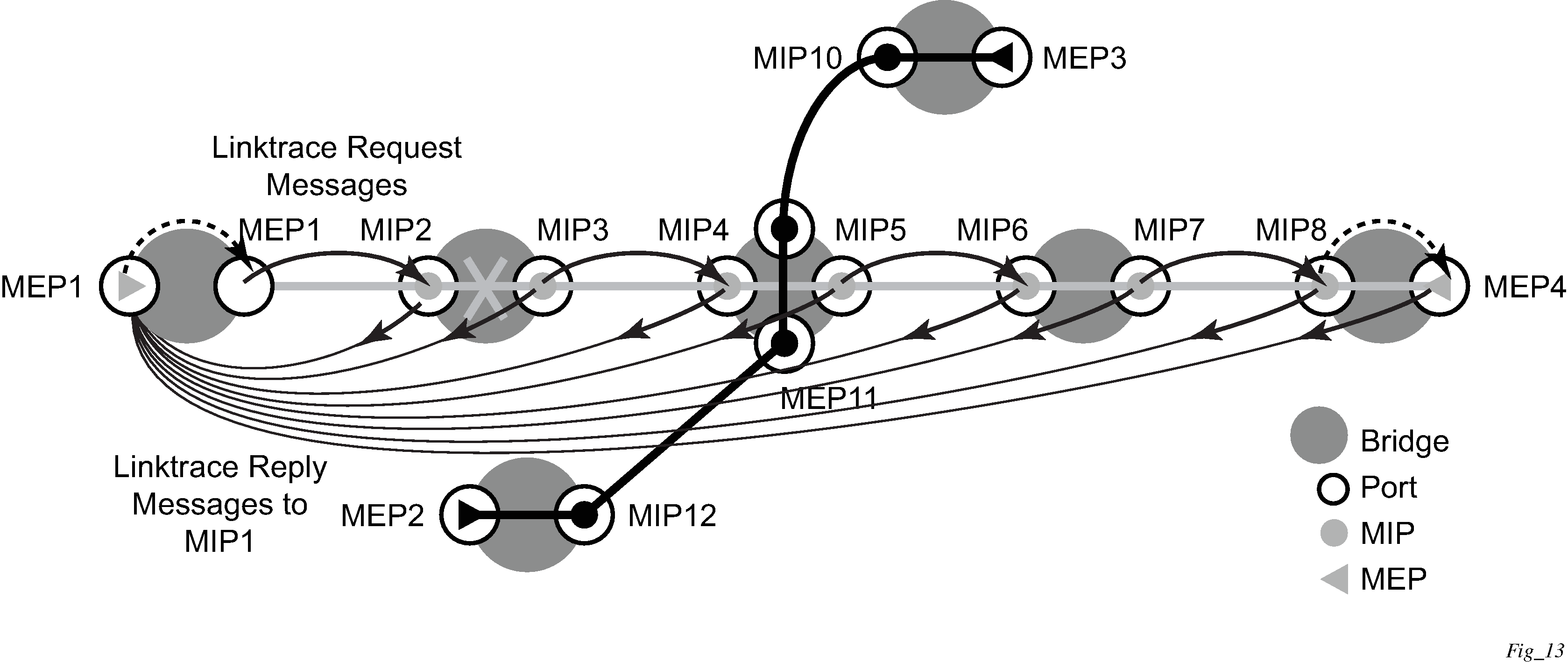A linktrace message is originated by an MEP and targeted to a peer MEP in the same MA and within the same MD level (Figure: CFM linktrace). Linktrace traces a specific MAC address through the service. The peer MEP responds with a linktrace reply message after successful inspection of the linktrace message. The MIPs along the path also process the linktrace message and respond with linktrace replies to the originating MEP if the received linktrace message that has a TTL greater than 1 and forward the linktrace message if a look up of the target MAC address in the Layer 2 FDB is successful. The originating MEP shall expect to receive multiple linktrace replies and from processing the linktrace replies, it can put together the route to the target bridge.
A traced MAC address is carried in the payload of the linktrace message, the target MAC. Each MIP and MEP receiving the linktrace message checks whether it has learned the target MAC address. To use linktrace the target MAC address must have been learned by the nodes in the network. If so, a linktrace message is sent back to the originating MEP. Also, a MIP forwards the linktrace message out of the port where the target MAC address was learned.
The linktrace message itself has a multicast destination address. On a broadcast LAN, it can be received by multiple nodes connected to that LAN. But, at most, one node sends a reply.

The following linktrace related functions are supported:
MEP supports generating linktrace messages and responding with linktrace reply messages. The ETH-LT PDU format does not allow a MEP to have more than a single active ETH-LT session.
MIP supports responding to linktrace messages with linktrace reply messages when encoded TTL is greater than 1, and forward the linktrace messages accordingly if a lookup of the target MAC address in the Layer 2 FDB is successful.
Displays linktrace test results on the originating MEP.
SenderID TLV may optionally be configured to carry the ChassisID. When configured, this information is included in LTM and LTR messages.
Only the ChassisID portion of the TLV is included.
The Management Domain and Management Address fields are not supported on transmission.
THE LBM message includes the SenderID TLV that is configure on the launch point. The LBR message includes the SenderID TLV information from the reflector (MIP or MEP) if it is supported.
Supported for both service (id-permission) and facility MEPs (facility-id-permission).
Supported for both MEP and MIP.
The following output includes the SenderID TLV contents if it is included in the LBR.
oam eth-cfm linktrace 00:00:00:00:00:30 mep 28 domain 14 association 2
Index Ingress Mac Egress Mac Relay Action
----- -------------------- -------------------- ---------- ----------
1 00:00:00:00:00:00 00:00:00:00:00:30 n/a terminate
SenderId TLV: ChassisId (local)
access-012-west
----- -------------------- -------------------- ---------- ----------
No more responses received in the last 6 seconds.